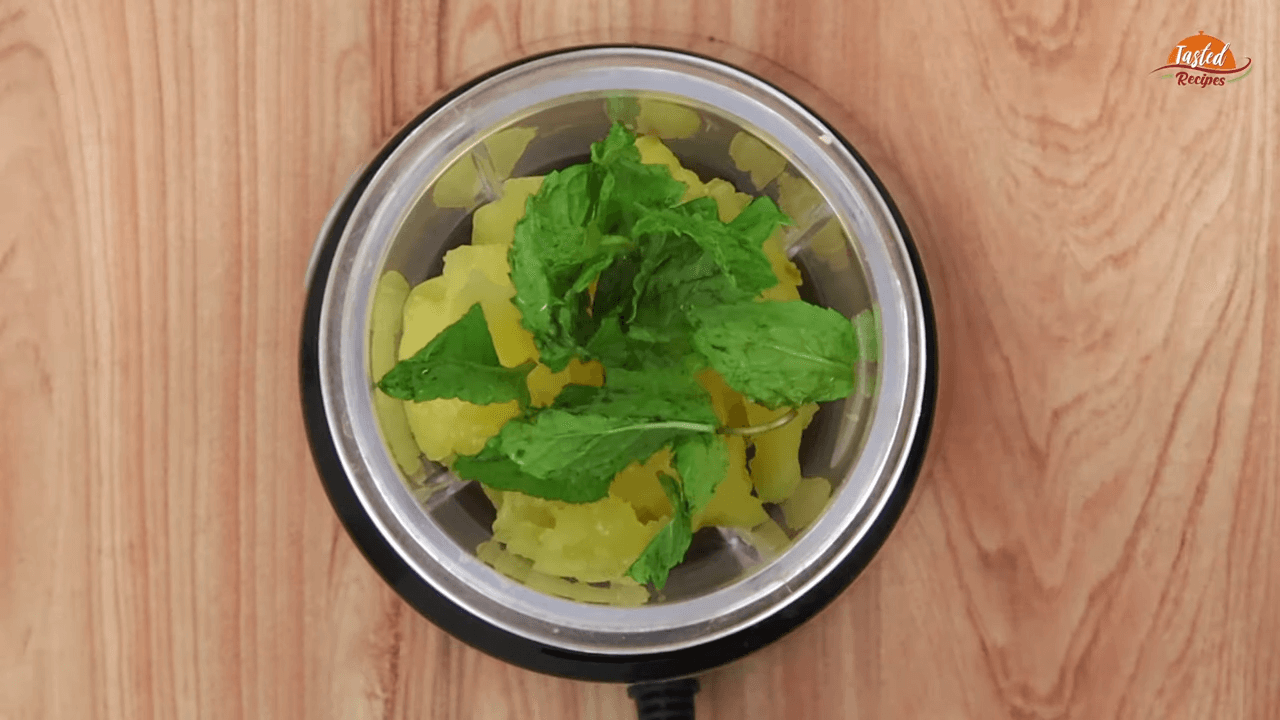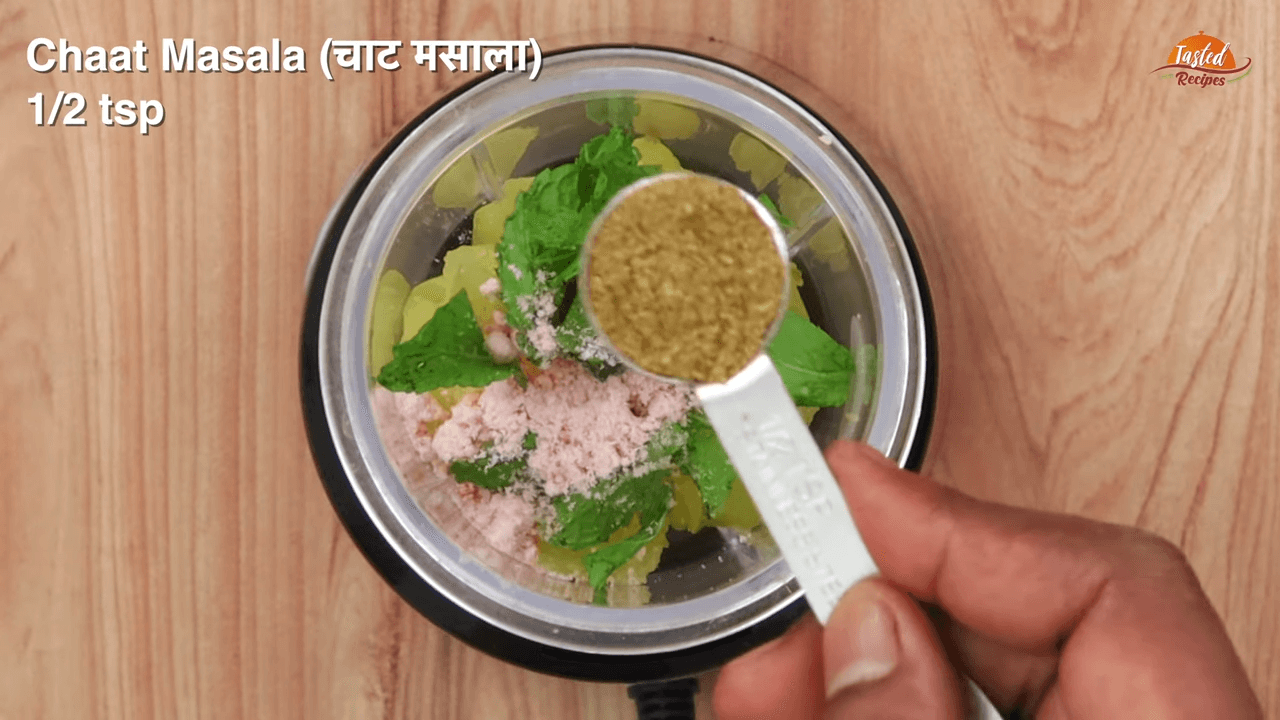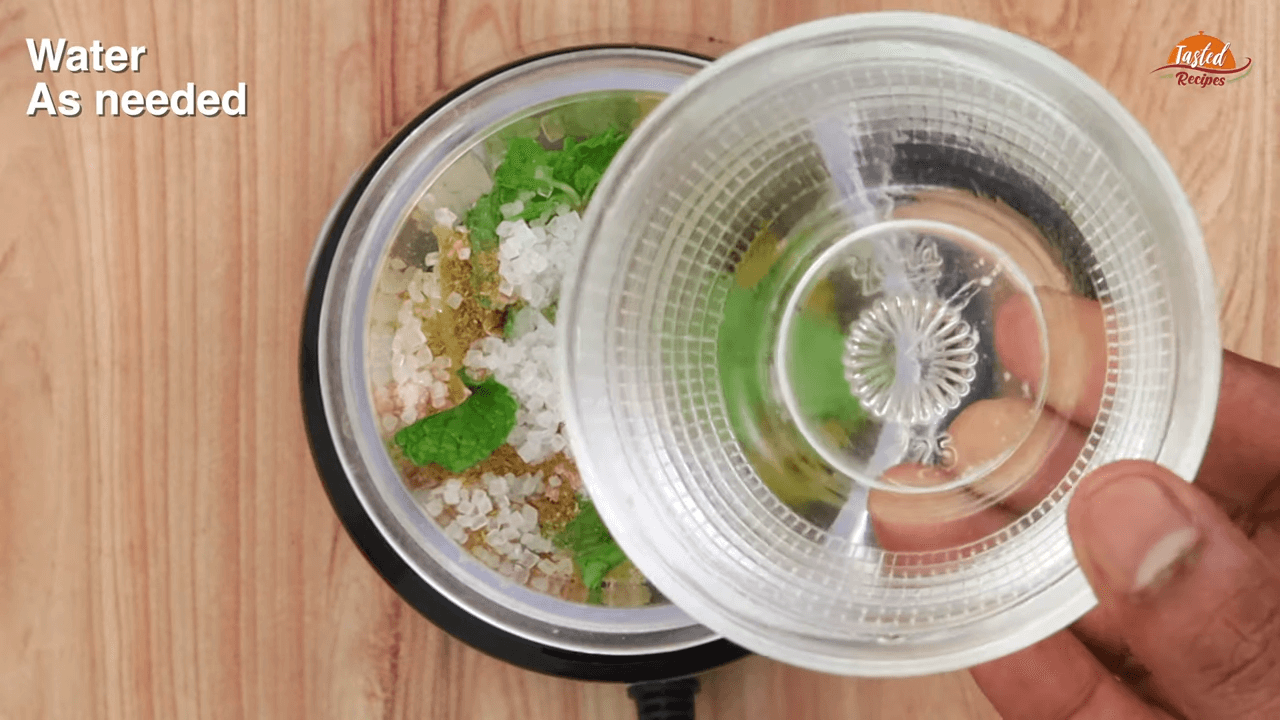Aam Panna lassi is truly a treasure of refreshing taste and mouth-watering flavour. I know that lassi and aam panna is enough to quench your thirst. But imagine how amazing it will be to have them together! Aam panna lassi, where aam is mango, panna remotely translates to “Tangy drink”, and lassi is a curd-based beverage.
Both the main ingredients in this recipe, aam panna and lassi, include sugar in a higher amount than other lassis. But the mango used in this lassi is semi-ripe which is sweet and sour. Therefore, despite containing more sugar, this lassi is sour (or sweet and sour).
Aam panna is a drink on its own. But here I am, not making it as watery. The amount of water will be low to make it slightly like syrup. That will help the texture of the lassi and will not make it thin. I am not using all the ingredients of aam panna. Some ingredients like fennel seeds, roasted cumin powder, and mint paste are missing from the aam panna I use in this recipe.
The taste of aam panna will differ when you change the method of making it (Which I will tell you about next). If you want to know about aam panna in detail, click here.
Ways to make Aam panna
Boiling mangoes
Boiling mangoes is the easier way to make aam Panna. This way, you can enjoy the sour taste of mango and sweetness together. That is a mouth-watering combo. For sweetness, I think Sugar is the best option in this method. This method keeps your aam panna lassi taste more natural and comparatively sweet.
Roasting mangoes
Roasting mangoes are a popular method of making aam Panna in northern India. This method will add a slightly smoky flavour to your lassi. For sweetness, in this method, jaggery is a better option. Jaggery will complement the taste of roasted mangoes well.
You may have to reduce the amount of sugar in your lassi due to the addition of jaggery. The sweetness will be different because jaggery is often not used in lassis. But I assure you it will taste just as impressive. If you like the combination of jaggery and mango, try out Raw Mango Murabba with Jaggery.
Sweeteners to use in aam panna lassi
Jaggery
Jaggery is the best option to avoid added sugar in aam panna. It has fewer (If not none) processed chemicals compared to sugar. However, jaggery is warmer for the body, contrary to the nature of aam panna and lassi. The freshness of the lassi itself will overshadow it, so it’s okay. Add cardamom seeds to lassi to counter the heat of jaggery more effectively.
The sweetness of jaggery will add a more natural taste to this lassi. Though sugar and jaggery are made from sugarcane, the sweetness will differ. Jaggery is sometimes semi-liquid, making it easier to dissolve and serving the texture well.
Usually, when adding sugar to aam panna, maintaining a 1:2 ratio is preferable. If you add 1 cup of mango pulp, add 2 cups of sugar. When using jaggery, I would advise you to maintain the ratio. You can even reduce sugar in lassi while making it if you use jaggery in aam panna.
Stevia
Stevia is a plant-based sweetener with little to no chemicals used in it. Stevia is your go-to option to experience natural and healthy sweetness. One thing to remember is stevia may not provide as much sweetness as sugar. So you may have to use more stevia in the aam panna or more sugar in the lassi to balance it.
If you plan to add stevia to lassi, add it in a higher quantity. In this recipe, 1/3 cup sugar is used in lassi. If you want to match the sweetness level of that much sugar, you will have to use stevia in a large amount. So, I would recommend sticking to sugar when it comes to lassi
Note: The 1:2 ratio will not work in the case of stevia; you will have to increase the amount as per your requirement.
Evaporated sugarcane juice
Evaporated sugarcane juice is the initial stage of making sugar. Moreover, it is completely natural! Some preservatives might be there if you buy them from the market, but apart from that, there are no chemicals. I would suggest evaporated sugarcane juice in the aam panna (Instead of directly in the lassi).
Evaporated sugarcane juice will make your lassi more refreshing. Adding mango and evaporated sugarcane juice will be a natural, juicy, and mind-blowing combo. Also, it will give some dark brown colour to your lassi. The colour is a bit unorthodox for lassi, but it will taste just as refreshing (maybe even more!).
Additional Ingredients
- Mint leaves will work excellently as a topping, too.
- Cardamom seeds and cumin powder are the two best companions for this lassi. Though I have not used them in this recipe, you can add them.
- Use black pepper in aam panna to make your lassi extra tangy.
- Use lemon juice in Aam panna to intensify the tangy taste in the lassi.
Aam panna lassi vs Mango lassi
Both of these lassis include mango but in different forms. The differences include taste, ripeness of mango, the method we add mango, and the integration of mango and some ingredients. Let’s see in detail how mango lassi differs from aam panna lassi.
- In mango lassi, you will use mango by simply chopping it and adding it to the mixer and other ingredients. In aam panna lassi, you will add mango after boiling (or roasting) and that too after making aam panna from it.
- The mango used in mango lassi is ripe and sweet. The mango we use in this lassi is semi-ripe and slightly sour.
- Mint leaves are not used in mango lassi, but in this recipe, it is used as a topping and an ingredient in aam panna.
- Chaat masala and rock salt are included in aam panna lassi as ingredients of aam panna, providing the lassi with a tangy taste. Mango lassi is sweet, and it does not contain them.
- The amount of sugar and sweetness is a basic difference in these lassis. Mango lassi has less sugar (2-3 tablespoons). In aam panna lassi, the amount of sugar is significantly higher (1-2 tablespoons in aam panna+ 1/3 cup in lassi). Yet mango lassi is sweeter.
- Milk is used in mango lassi, whereas it is absent from aam panna lassi.
FAQ
Is the 1:2 ratio of sugar in aam panna by weight or volume?
I suggest going by volume; if you use 1 cup of mango pulp, use 2 cups of sugar. This way, it should be easy to measure. If you think it is too much sugar, add 1 or 1.5 cups of sugar per 1 cup of mango pulp. And then add sugar if it seems less afterwards.
If you are concerned about the time sugar takes to dissolve in the pulp, then powdered sugar is also acceptable.
What should I do if my aam panna gets thick?
If your aam panna is thick while making it, you may have used less or more pulp. Add water while making it; if you add water later to make it less thick, it may ruin the taste.
After it is ready, it will have a sticky, semi-liquid texture. When stored in the fridge, it will get thick. Don’t worry, take it out of the fridge and let it rest at room temperature, and it should come back to standard thickness in some time.
If you want to speed up the process of bringing the aam panna to room temperature, then take the jar where you have stored it and rinse it in regular or lukewarm water. Ensure the jar is entirely closed and water can not enter it.
How long will aam panna lassi last?
If your lassi is ready, I suggest finishing it within the first hour for the best taste. You can store it in the fridge to make it last a couple of days, but finishing it on the same day is advisable.
If your concern is limited to aam panna, then store it in the fridge, and it should stay fresh for a couple of months; however, use it on an early basis. Do not store it in the fridge for a longer time.
How else can I mix lassi and aam panna?
In this recipe, I add aam panna in a glass and then pour lassi. But if you want, you can mix aam panna in the mixer with curd to integrate the taste better way.
At what temperature should I mix Aam panna?
You can mix aam panna with lassi when aam panna is at room temperature. If it is slightly cool, then it is fine, too; it will taste good.
























